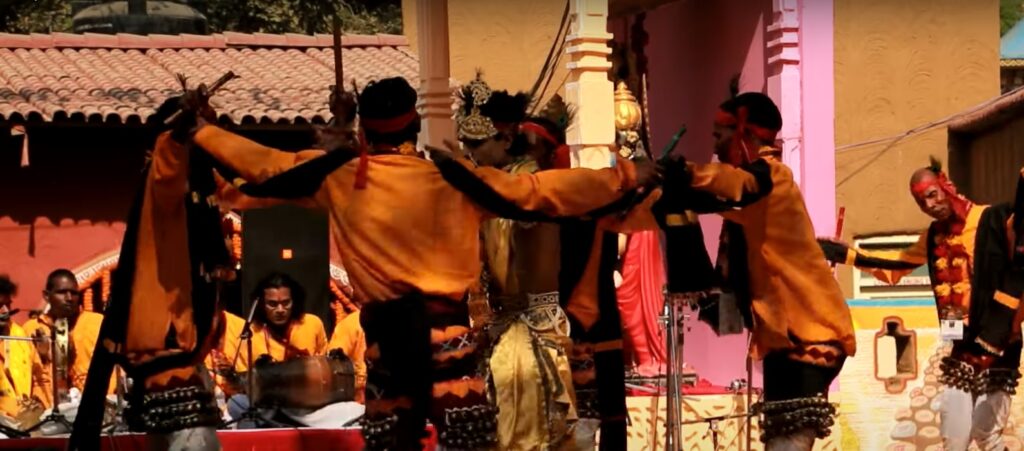Jhumar is an important dance form celebrated in the Chota Nagpur region in the state of Jharkhand. The dance form is found in two varieties, one is the Janani Jhumar performed by the women and the other is Mardana Jhumar, performed by the men. The dance is part of festivals celebrated during the harvest season in August and September.

Purpose of Mardana Jhumar Dance
Jhumar dance is a celebration of tribal life. It is centred around agriculture, which is the prime source of food and income for these people. Mardana Jhumar dance is performed for the amusement of the crowd during the festivities. The dance involves some demonstration of martial arts, which is a popular art form among the tribal community of Jharkhand.
Mardana Dance Performance
Mardana Jhumar dance is performed only by the men. The dancers form a circle on the stage and dance to the beats of the musical instruments.
With one beat of the drum, they move the left foot slightly forward, and in the next drum beat, the right leg is raised slightly and placed behind the left leg. These steps are repeated as the dancers move forward in the circular formation. The hands also move in unison.
Martial arts is also part of the dance form. The men portray some fierce fighting sequence. Weapons like the sword or bow and arrow are also made part of some performances. The entire show is framed beautifully and is worth being a part of.
Mardana Jhumar Dance Attire
The men wear the traditional shirt and dhoti. While the dhoti is white, the shirt is chosen in a bright colour. A contrasting colour cloth is then tied around the waist, over the shirt. A turban is tied around the head and it is decorated with nice long bird feathers. Some men wear the ghoongroo in their feet.
A garland made of fresh flowers is worn by all the Mardana Jhumar dancers. They also hold some colourful pieces of cloth in their hands and shake them as they dance.
Musical Instruments Used
There are various instruments used during the Mardana Jhumar dance. Kartal, Mandar, Nagada, Dholak, Shehnai, Flute or Bansi, and Sangi are the ones most commonly used. All of these plus the tinkling sound of the Ghoongroo makes up for excellent music to which the men dance.

Pingback: All Folk Dances of India - Auchitya
Pingback: All Folk Dances of India - Auchitya